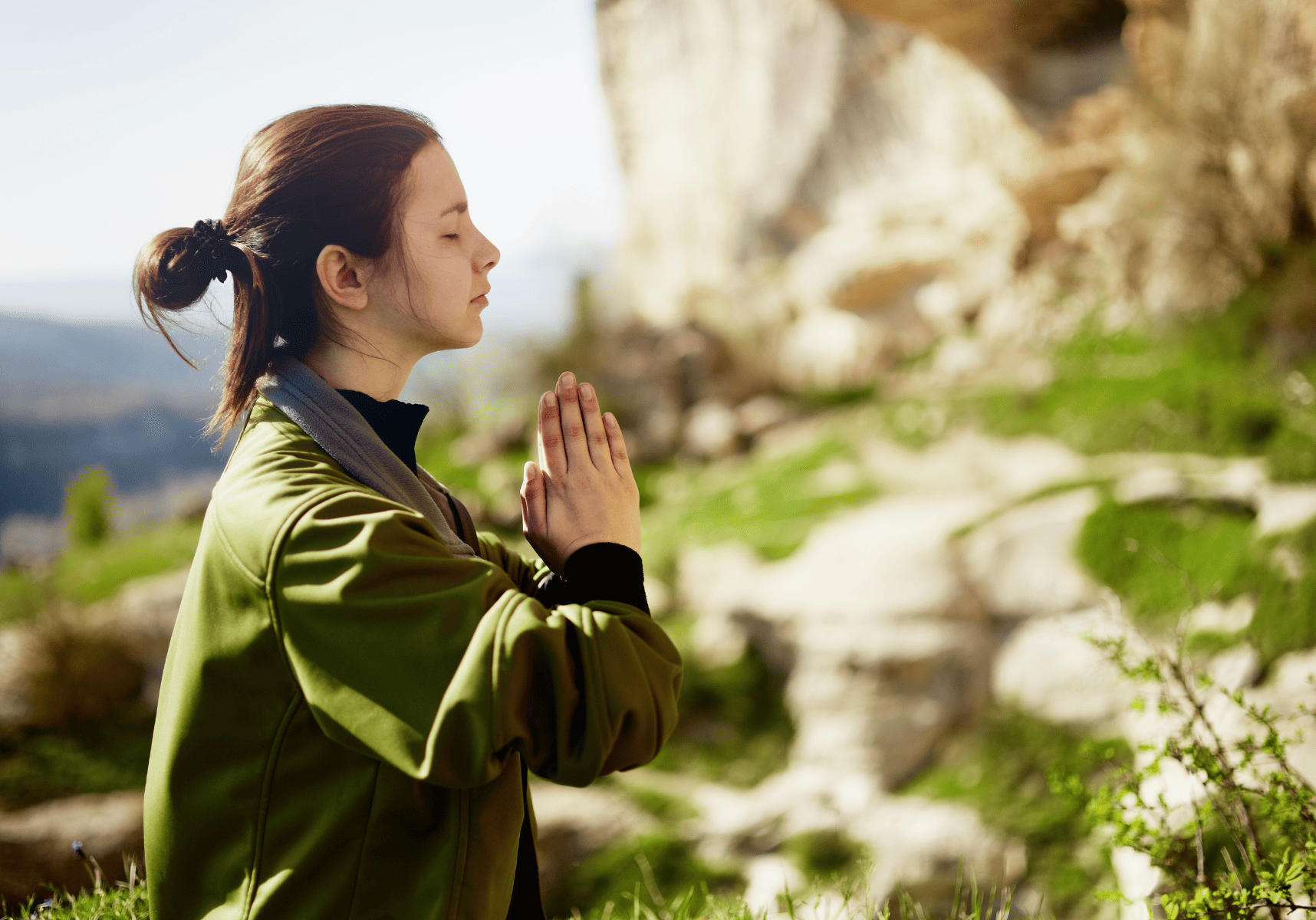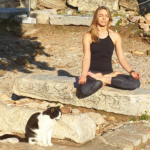
Transitioning into Spring
A Yogic Journey into Spring's Awakening- By Teresa Yap-Young
Reading time: 4 minutes
As we depart from the clutches of winter and begin the transition into Spring, the landscape softly starts to change. You may have noticed the colour of spring bulbs emerging, blossoms on trees, the muddy browns of the earth and woody sticks of trees, unfurling into wafts of green. You might become aware of sweet aromas from flowers and the sensations of warmer, lighter weather.
Incorporating mindfulness can help to boost mood and is particularly helpful if you suffer from Seasonal Affective Disorder (SAD). Tuning into our senses helps us to stay engaged and connected to the present. In spring one of the most notable sounds is the dawn chorus.
As migratory birds return and wild birds start to defend territories, find mates and build nests, they communicate through song. Mindfully listening to this seasonal phenomenon can help instil a calm and focused mind.
Awaking within the early hours of sun rise and exposing ourselves to daylight can also helps us to restore our circadian rhythms which can become disturbed during the winter. This lack of exposure to sunlight over the winter months which is associated with tiredness and depression, can be re established by exposing ourselves to early morning light, boosting our feel good Serotonin levels.
There's a famous quote* from the enlightenment philosopher Jean-Jacques Rousseau, " I can only meditate when I am walking; when I stop I cease to think; my mind only works with my legs." There's a tangible link between walking and bringing the mind into harmony, almost like a spring cleaning of our outlook.
Embracing the outdoors in the Spring through a walking meditation is a wonderful way to connect with the season, inducing focus, whilst relieving stress. Rather then taking each step on the earth as granted, notice your imprints as you walk and how the ground and environment around you is changing. Be aware and in tune with the landscape and notice how mind, body and energy levels shift.
According to ayurveda we live in tandem with the seasons. During winter we overeat to take in more nourishment to withstand the cold months, however this often leads to a sluggishness in the digestive, respiratory and digestive systems. Spring is associated with Kapha, which is linked to moisture, legarthy and heaviness.
Therefore in spring the body can feel imbalanced. In order to create balance and become ready for warmer days it needs needs to detox from material that has been stored physically and mentally over the winter. It is a time to eat lighter foods (try to incorporate bitter leafy greens, ginger, tumeric and legumes) to declutter, to move, to sweat and to breathe deeper to aid the systems of the body to the transition to spring.
Tree and grass pollen are also prevalent in Spring. Jal Neti, the practice of rinsing sterile salt water through the nostrils, one of the Shat Karma Kriyas (Six Yogic Cleansing Actions) described in the Yoga Hatha Pradapika, helps to remove pollen from the nasal passages. As Jal Neti helps to improve air flow, it strengthens the respiratory system and has a calming affect on the Nervous System.
Whereas in winter we lean towards restorative, grounding yoga practices, in the spring our practice should feel more energic. Connecting to our Manipura chakra will stimulate the agni, the fire in our belly and aid in the transition to spring. The Manipura chakra, the solar plexus is located between the diaphragm and navel. Incorporating Surya Namaskar (Sun Salutations) to stimulate circulation, and lympth flow, will help to strengthen and flush out these systems.
Whilst strong standing postures such as Virabhadrasana ii (Warrior ii) will help to increase self esteem, which can also take a knock in the winter months. Core activating postures like Navasana (Boat) and Bhujangasana (Cobra) help to energise and stretch the abdomen, whilst Spinal Twists such as Ardha Matysendrasana (Half Lord of the Fishes Pose) aid in removing legarthy from the gall bladder, liver and spleen.
These help to release stagnant energy in the digestive system and to open the Manipura chakra, so that we can transform energetically from winter into spring, and emerge feeling confident, focused and healthy.
*Quote from: Jean-Jacques Rousseau, The Confessions (1782) trans J.M.Cohen ( London, Penguin, 1953), p.382







